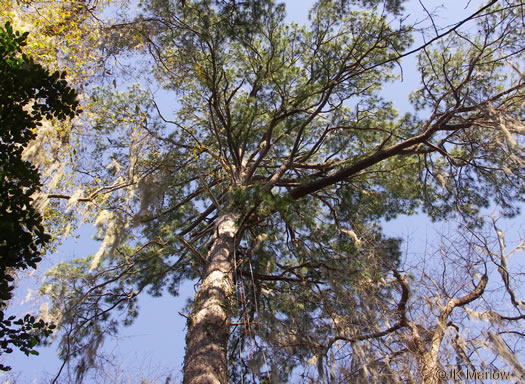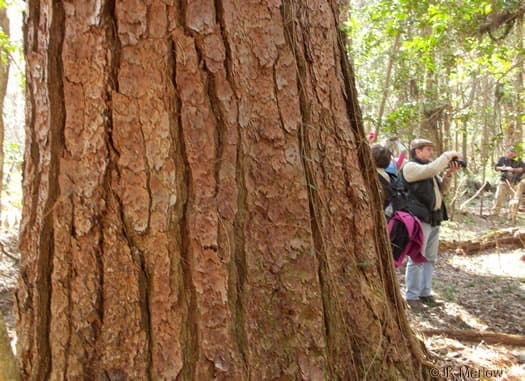Pinaceae
loblolly pine
Pinus taeda
Synonyms
Pinus heterophylla
Other Common Names
old field pine
Plant Type
Large Tree (greater than 25 ft)
Life Cycle
Perennial
Typical Size
60-90 ft. tall
20-40 ft. wide
Tolerant of
Occasional Flooding
Inolerant of
Dry Soil
Propagation
By seed
Plant Propagation Notes
Cold moist stratify seeds for 60 days.
Plant Planting Notes
Easily transplanted when young.
Plants/Diseases
Loblolly pines may be affected by pine beetle, pine engraver beetles, fusiform rust, and are susceptible to wind damage.
Wildlife Benefits
Host plant for butterfly larvae, Fruit/seeds for birds
Leaves
Three needles per fascicle; 6-10 inches long; finely toothed.
Flowers
Red to yellow male cones and yellow to purple female cones.
Fruit
Three to six inch long ovoid-cylindrical to narrow conical cones.
Bark
Bark is brown to red with ridges and peeling, irregular scales.
Toxicity
No known toxicity.

USDA Hardiness Zones
6, 7, 8, 9
Light Exposure
Full Sun
Soil Moisture
Medium, Moist
Soil Drainage
Well-drained, Poorly Drained
Soil pH
Acidic (less than 6.0)
Native in South Carolina?
Yes
Plant Native Habitat
A wide variety of habitats from dry-mesic upland forests to bottomland forests, including riparian and maritime forests. Also disturbed areas like road sides. Often planted in pine plantations.
Global Conservation Status (NatureServe)
Secure (G5)
Federal Conservation Status (USFWS)
Not Listed
Distribution Notes
Common in the South Carolina coastal plain, sandhills, and piedmont. Uncommon and exotic in the mountains.



